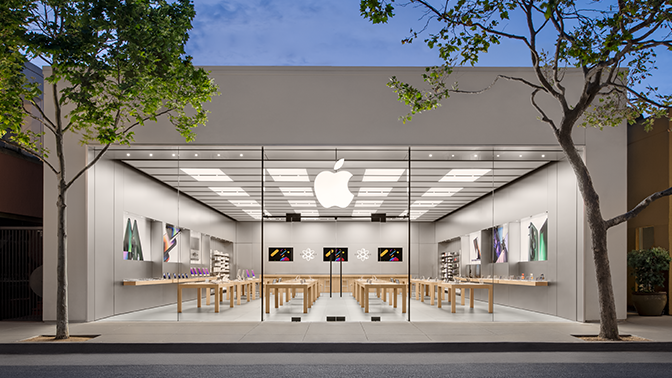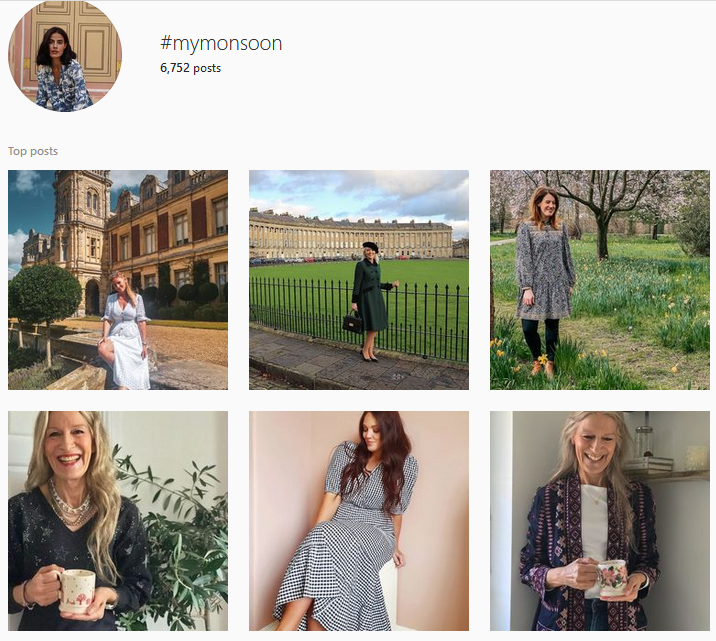
What is Retail Branding in 2023? 7 Benefits to Get on Board
Last update: 28 February 2024 at 02:55 pm
Long before retail even entered the digital realm, it was given that to compete, retailers need to create distinct identities for themselves.
Retail branding helps customers recognize brands and their positioning in the marketplace. This same philosophy holds for the digital market as well.
Sure, customer engagement and consumer behavior are different when a customer shops online. But retail branding stays very much the same with the end goal of building long-term customer loyalty and relationships.
What is retail branding?
Retail branding is a strategy where brands uniquely market their product to optimize their reach and sales. In addition, it is about creating a memorable impression on consumers to increase the overall brand values and define what consumers can expect from you.
It is considerably more challenging today than it ever was because of the changing market dynamics. But it is also more rewarding and gives numerous opportunities for brands to strategically position themselves.
What are these rewards and benefits? Let’s check it out.
7 Benefits of Retail Branding
1. Stand out from the competition
First and foremost, retail branding helps brands stand out from the competition. It’s quite simple if you think about it. Imagine two brands that sell the same products to the same target audience in the same city. The customers only differentiate them based on their branding initiatives.
The world’s leading brands have leveraged logos, brand colors, names, and customer experiences to create distinctive identities. From miles away, one can spot McDonald’s big yellow M. Or easily recognize Starbucks from their cups.
These are all deeply ingrained in the branding strategy that the customer doesn’t have to think twice about what brand they’re purchasing from. They just know, and they’re willing to pay for the branded experience even if they have to wait in queue or have to pay extra money.

This shows the importance of developing your brand personality. You need to define how it will provide an excellent quality product and an overall shopping experience to gain the competitive advantage you’re striving for. What colors are you going to use? How will your logo communicate your positioning? Pick elements that reflect your brand values.
2. Consistent experience
Recent marketing techniques are all focusing on consistency. Because it is the key to embedding your brand in the customers’ minds and building trust. As you grow your presence, retail branding helps you keep your core values intact regardless of your platform. Even if the customer is shopping online, they will get the same experience regardless.
Retail branding helps you deliver consistent experiences that help customers have a positive experience with the brand irrespective of their location and buying patterns.
Once you know how you want to sell and what tone, voice, and messaging you want to use, you can easily replicate that experience at all your stores and platforms.
The customer experiences with your products, advertising, at retail stores, and even in the communication with the salesperson hold the same amount of quality every time.
A great example of this is Apple. All Apple stores look the same globally. They have the same layout, infrastructure, and colors.
Not just that, but it also ensures consistency in customer service, product quality, and product packaging that reassures the customers about purchasing from the brand regardless of their location.
3. Improve visibility
Visibility is a game of seconds. Imagine a prospect walking down the grocery aisle or a retail store. What is the guarantee that the prospect will only check out your brand and not your competitors?
It’s not easy, as the number of products in the marketplace is constantly increasing. And retailers have to strive toward a good shelf space to increase visibility and also use branding elements to stand out from the competition.
These very same branding efforts establish what the company stands for and what sets them apart. They educate the customers on how the product is different and why it is right for them. Top retail branding elements that help you address these challenges are:
Logo
The logo is an integral part of your retail branding identity. Your design that embodies the brand identity makes a lasting impression on the customer.
When you strategically add a logo to the buying journey, it eases the customer and helps them warm up to your brand. It ultimately builds a strong level of trust and loyalty.
Signage
For a physical store or a retail business, signage is the first point of contact. Research suggests that signage and window displays influence purchase decisions.
A lot of successful brands like Walmart have leveraged signage to attract customers and give them a feeling of entering their world.
Color
Colors evoke emotions. If we go deep into consumer behavior, it shows how colors help consumers remember and memorize the brand. Certain colors resonate better with a certain section of the audience.
If you’re targeting older people, you go for neutral tones such as gray or yellow to evoke feelings of calmness and peace, and so on.
Product Packaging and Display
If we’re speaking about improved visibility, we cannot skip visual merchandising. From lighting to spotlighting bestsellers, to store layout, everything helps your retail brand stand out.
4. Fostering better customer relationships
Successful retail branding strategies provide a personalized customer experience that fosters customer engagement. Customers appreciate brands that share similar values and make the customer cared for.
Personalized engagement helps consumers associate your brand with meaningful communication. A highly engaged customer purchases more from you recommend your brand to other customers and forms an emotional connection with your brand.
A relatable retail branding strategy will also encourage user-generated content marketing from customers. It ultimately drives more brand awareness and generates new customers for retail brands.
An interesting example is that of the fashion retailer, Monsoon. The brand asks shoppers to share photos of them wearing the product with the hashtag #MyMonsoon.
Once the images are uploaded, they’re pulled into on-site galleries, helping consumers to shop the looks they see. The brand also uses these UGC images in its email campaigns, resulting in an improvement in both the click-through rate and revenue.
5. Strengthen your omnichannel presence
The journey of today’s customers in the retail industry is quite different. They go through six different touchpoints before making a purchase.
They also often check out products on different platforms before making a buying decision. Research suggests that 59% of consumers practiced webrooming where they browse the product online and make the purchase in-store.
It’s no surprise then, that social media is the most in demand expertise for retail businesses coming to Sortlist (15% of the total), closely followed by Digital Strategy (12.27%) and Advertising (11.21%) (for more on that, check our Retail digital transformation report).
An omnichannel marketing strategy isn’t just something brands can consider. It’s something that brands should consider. When you create an omnichannel marketing strategy, you can focus on how you can meet your customers on their preferred platform to make their buying experience seamless and user-friendly.
So you know that your customers and everywhere and you need to be too. But it becomes essential to link these experiences. In the era of multiple channels, branding helps you connect your offline experiences with online ones and vice-versa.
For example, you’re an eCommerce business and you’ve onboarded a third-party logistics company for micro-fulfillment solutions. To ensure that your branding is reflected in the delivery process, you have to get your custom packaging done by the fulfillment solution provider.
Alternatively, you can provide your packaging materials to the fulfillment center so that your brand is represented accurately whether you fulfill orders in-house or through external services.
It helps retailers follow a synchronized procedure for delivering products and brings uniformity to the supply chain. If all the centers follow the branding guidelines, they can deliver authentic brand experiences to consumers across channels while they’re doing online shopping.
6. Improve market strength
Branding drives business growth. Regardless of your business, the level of buyers’ willingness to pay isn’t always influenced by pricing. The strength of your brand directly affects your market share. How?
Lower price sensitivity
Once you build a brand that enhances customer loyalty, your customers become less price sensitive and ultimately pay the price because they have a positive emotional connection to your brand.
WORD-OF-MOUTH Advertising
“I recently purchased custom tote bags from this brand. I think the bag is awesome, you should look for options too!”
What if every customer felt this after buying from you?
Once a customer resonates with your brand, they’re highly likely going to suggest the brand to their friends and acquaintances. Strong brands with high-quality products back up the promises the customers claim.
Higher Impact of Advertising
Your retail branding and advertising campaign efforts eventually bring you to a platform where the customers look forward to what you come up with.
Think about awaiting the latest collection of Gucci or the features on the latest iPhone. Established retail brands that have reliable products can get a strong ROI on advertisements and improve their market strength.
7. Build loyalty and trust
Research suggests that 57% of consumers spend more money on brands they feel loyal to. When you consistently use a sustainable retail branding strategy to create positive experiences for your customers, loyalty and trust are natural outcomes.
Brand loyalty brings down your customer acquisition costs and boosts your retention efforts. By using your brand voice combined with storytelling, you can keep your customers engaged and lay the foundation for long-term loyalty and trust.
For example, Nike attracts new customers and resonates with existing ones with inspirational and aspirational messaging.
It reaches out even to people that are not into athletics per se. It simply builds customer trust through an emotional connection.
Wrapping up
Retail branding helps brands overcome the intensity of competition in retail today. If done right, it can leave a lasting impact on your audience and you’ll be able to do hard selling in the long term.
The next step is to find the right branding agency that fits well on the budget. Here is a guide to budgeting for a brand to know more about its other aspects in your business strategy.









